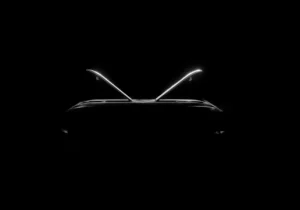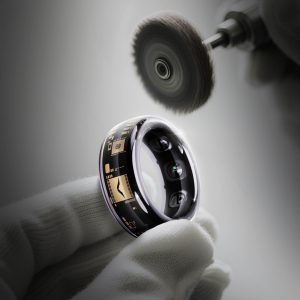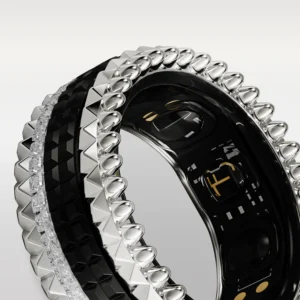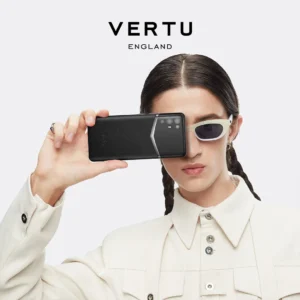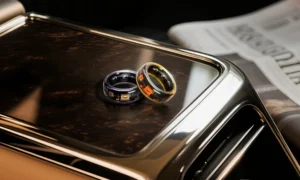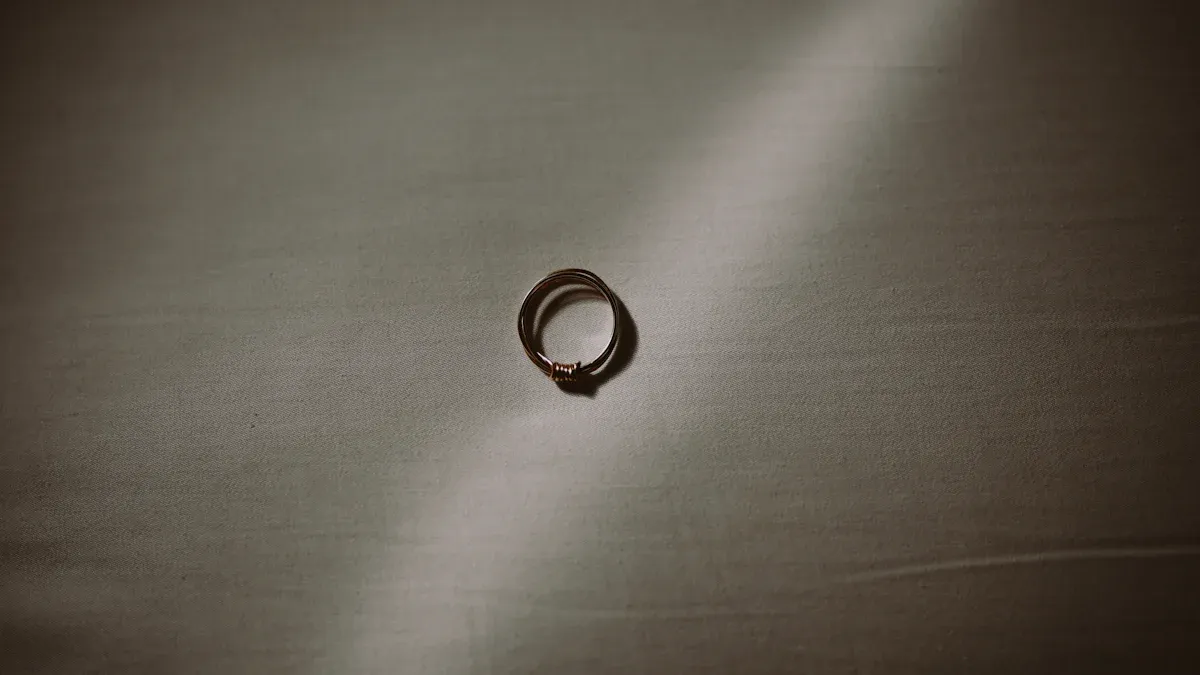
You deal with stress almost every day. Millions of people do too. Studies show that over half of adults feel stress. This stress can change how they live each day. The Oura Ring stress tracking feature helps you monitor stress in a new way. It does more than just ask how you feel. The Oura Ring uses your biometric data, looking at heart rate, heart rate variability, body temperature, and movement. This provides you with immediate feedback.
Here’s how the Oura Ring stress tracking compares to older ways of checking stress:
|
Feature |
Oura Ring Approach |
Traditional Methods |
|---|---|---|
|
Data Type |
Biometric data (HR, HRV, motion, temp) |
Subjective self-reports |
|
Objectivity |
Gives facts from your body |
Depends on what you think |
|
Real-time Monitoring |
Shows stress as it happens |
Checks stress after it happens |
|
Adaptability |
Learns what is normal for you |
Stays the same each time |
|
Validation |
Tested with trusted solutions |
Can be less reliable |
-
About 52% of Americans feel stress that is too much at least once a year.
-
Around 60% of people worldwide feel this kind of stress.
-
One out of three adults say stress affects their daily life many times each year.
Key Takeaways
-
The Oura Ring checks your stress with biometric data like heart rate and movement. It gives you feedback right away.
-
Knowing your stress patterns helps you make better choices. You can decide when to rest or use relaxation techniques.
-
The app gives you daily tips and insights from your own data. This helps you balance stress and recovery well.
-
Resilience scores from the Oura Ring help you manage stress. They also help you get healthier.
-
Your data stays private and safe. You can focus on your health without worrying.
Oura Ring Stress Tracking
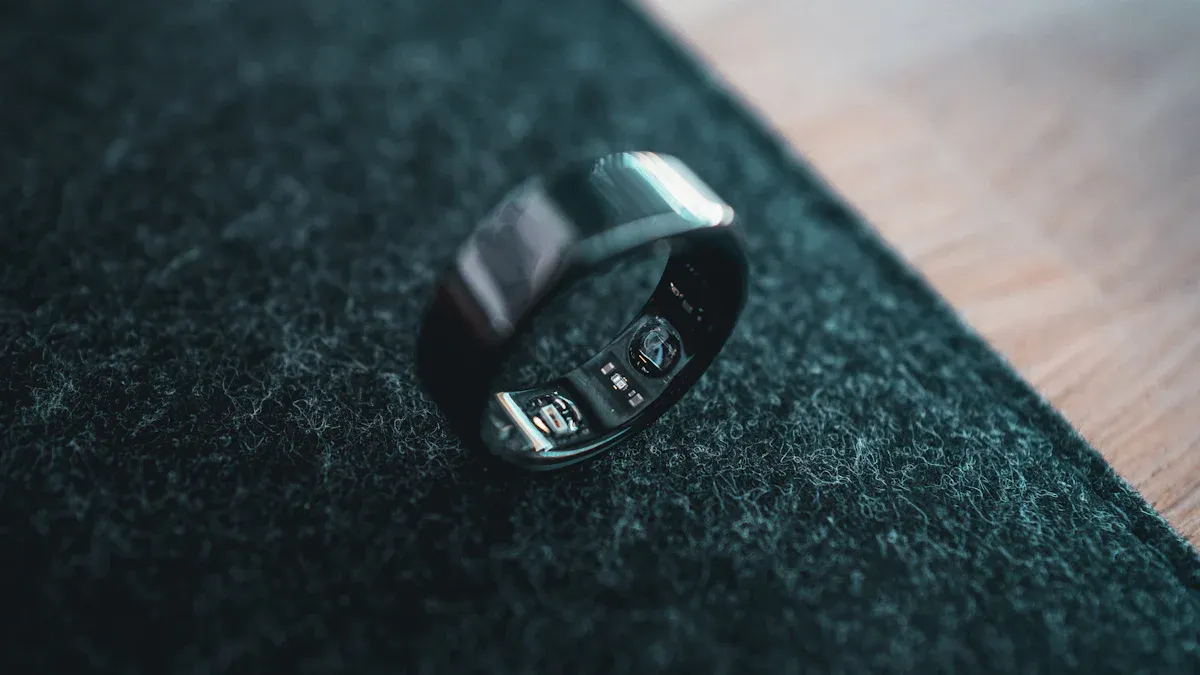
Biometrics Used
You want to know how the Oura Ring stress tracking feature works. The Oura Ring uses several biometric signals to help you understand your stress. These signals come from your body and change when you feel stress. The main signals include heart rate, heart rate variability, motion, and skin temperature. Each one tells a different story about your stress levels.
Here is a table that shows how these signals relate to stress and what you see in your Oura Ring data:
|
Biosignal |
Your Body’s Stress Response |
How It Shows up in Oura Data |
|---|---|---|
|
Heart rate |
Your heart beats faster because your body releases adrenaline to prepare for stress. |
Higher heart rate |
|
HRV |
Your heart rate variability drops when your body feels stress. The nervous system takes over. |
Lower HRV |
|
Motion |
You move more when you feel stress. Stress hormones make your body more active. |
Increase in movement and activity |
|
Skin temperature |
Your skin gets cooler because blood vessels tighten during stress. |
Lower skin temperature |
The Oura Ring collects these signals day and night. You do not need to do anything special. The ring tracks your heart rate and heart rate variability while you sleep and during the day. It also checks your skin temperature and how much you move. This gives you a full picture of your stress.
Tip: You can check your Oura Ring app to see these signals and learn how your body reacts to stress.
How Metrics Measure Stress
You may wonder how the Oura Ring stress tracking feature uses these signals to measure stress. The ring looks for changes in your heart rate, heart rate variability, skin temperature, and movement. When your heart rate goes up and your heart rate variability goes down, your body may be reacting to stress. If your skin temperature drops and you move more, these can also be signs of stress.
The Oura Ring algorithm watches for these changes. It knows that heart rate variability drops when you feel stress. Your body temperature can also fall because your blood vessels get tighter. The ring combines these signals to give you a score for your stress levels.
Many studies show that heart rate variability is a strong sign of stress. Researchers found that low heart rate variability during sleep means more mental stress. They also learned that smart rings like the Oura Ring can track heart rate variability well. Other studies show that combining heart rate, heart rate variability, skin temperature, and movement helps measure stress more accurately.
You get more than just numbers. The Oura Ring stress tracking feature helps you see patterns. You can learn when your stress levels go up or down. You may notice that your heart rate rises before a big test or meeting. Your skin temperature may drop when you feel nervous. The ring helps you spot these changes and understand your stress.
Some research shows that heart rate alone does not always match how you feel. The Oura Ring stress tracking feature uses many signals together. This gives you a better view of your stress. You can use this information to make changes in your life. You may decide to rest more or practice deep breathing when your stress levels rise.
Note: The Oura Ring stress tracking feature does not replace talking to a doctor. It helps you learn about your body and stress.
Interpreting Stress Data
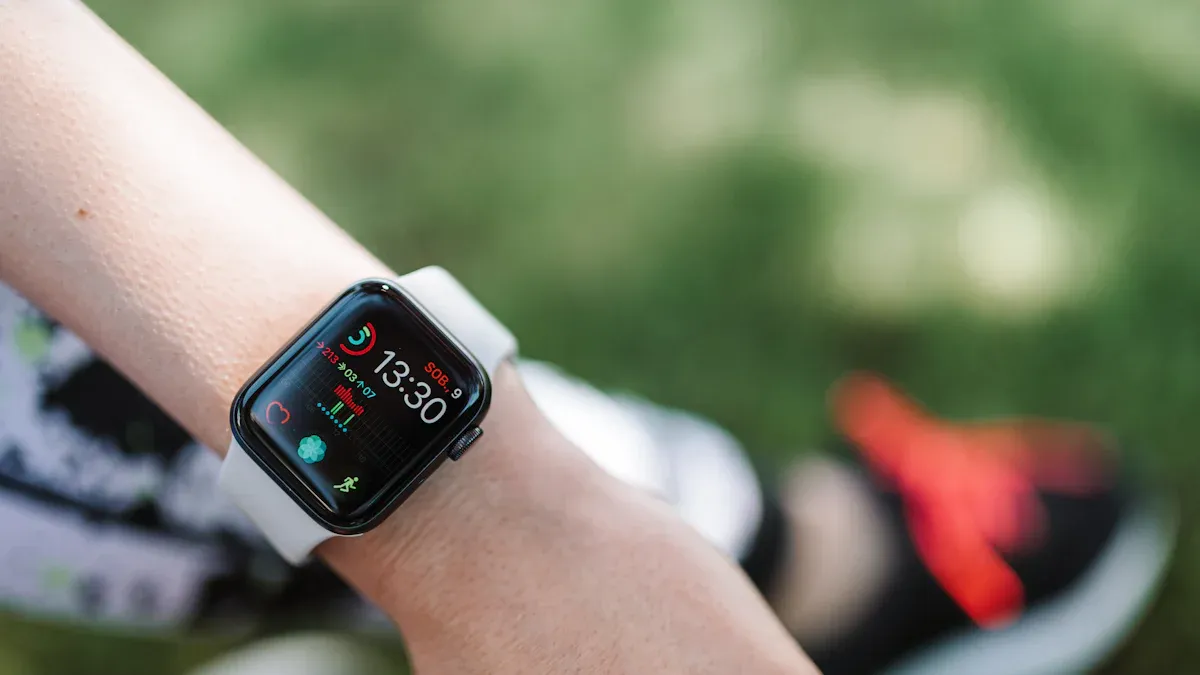
Daytime Stress Feature
You want to know how the Oura Ring shows your stress data. The Daytime Stress feature gives you a clear view of your body’s reactions throughout the day. You see your stress in real time, not just after the fact. The app uses easy-to-read visuals and messages to help you understand what is happening.
-
You get daily insight messages that sum up your health data, including stress.
-
The app gives you actionable tips based on your unique data.
-
You see metrics like resting heart rate, temperature trends, daily movement, sleep quality, and daytime stress zones.
The Daytime Stress feature breaks your day into stress zones. These zones show when your body feels calm, when it is recovering, and when it is under stress. You can spot patterns and learn what triggers your stress. The app helps you see if certain times or activities raise your stress.
As Tuomas Romppainen, Senior Product Manager at Oura, says: “We wanted to rebrand stress and help members see stress as a resource rather than something to avoid at all costs. Members will now have a more holistic picture of their overall wellbeing.”
You learn to see stress as something you can use, not just something to fear. The Oura Ring helps you balance stress with relaxation. You can use this information to make better choices each day.
-
The feature helps you notice what affects your stress.
-
You learn how to balance stress with rest.
-
The app encourages you to see stress as a way to grow, not just a problem.
Mari Karsikas, PhD, Head of Product Science at Oura, notes: “Although Oura already measured recovery during the night, we can now get more detailed information about the variation of the sympathetic and parasympathetic nervous system during the day.”
You get a full picture of your body’s stress response, both day and night. This helps you understand your health in a new way.
Resilience Scores
You also get resilience scores from the Oura Ring. These scores show how well your body handles stress and recovers from it. The ring looks at many things to give you this score.
-
The ring tracks your sleep in detail, including light, deep, and REM stages.
-
You get a daily Readiness Score. This combines your sleep, recovery, heart rate variability, and activity.
-
Heart rate variability gives you clues about your stress and recovery.
-
The ring checks your temperature for small changes that may show stress or illness.
-
You can add custom tags in the app to track habits or events that affect your scores.
Your resilience score helps you make smart choices. Many users say the Oura Ring helps them decide when to push themselves and when to rest. For example, Sam finds that the Readiness Score matches how ready he feels for challenges. He changes his plans if his score is low. Natalia uses the feedback to take breaks when her stress rises. She says this helps her work better and manage stress.
-
Users say the resilience scores help them make better health choices.
-
Some people use the Readiness Score to plan their day.
-
Others learn to listen to their body and take breaks when needed.
-
Many like the kind and helpful tone of the app’s advice.
You can use the Oura Ring’s feedback to build healthy habits. When you get a stress alert, you might try meditation, take a short break, or do something you enjoy. Many users find that these small steps help lower their stress and improve their day.
The Oura Ring gives you more than just numbers. It helps you understand your stress levels and teaches you how to respond. You learn to see stress as a normal part of life and find ways to handle it better.
Accuracy and Limitations
Reliability of Oura Ring
You want to know if the app’s data is correct. The Oura Ring uses special sensors to check stress and sleep. Many studies compare how well it works with other smart devices. The table below shows how the Oura Ring does in sleep and stress checks:
|
Device |
Sensitivity for Wake Detection |
Sensitivity for Deep Sleep Detection |
|
|---|---|---|---|
|
Oura Ring |
68.6% |
79.5% |
|
|
Apple Watch |
60% |
52.4% |
50.5% |
|
Fitbit |
55% |
67.7% |
61.7% |
The Oura Ring is best at finding deep sleep and classifying sleep. This is important because good sleep data helps you see your stress patterns. The ring uses heart rate, movement, and temperature to show you what is happening. No device is perfect, but the Oura Ring gives you steady results over time.
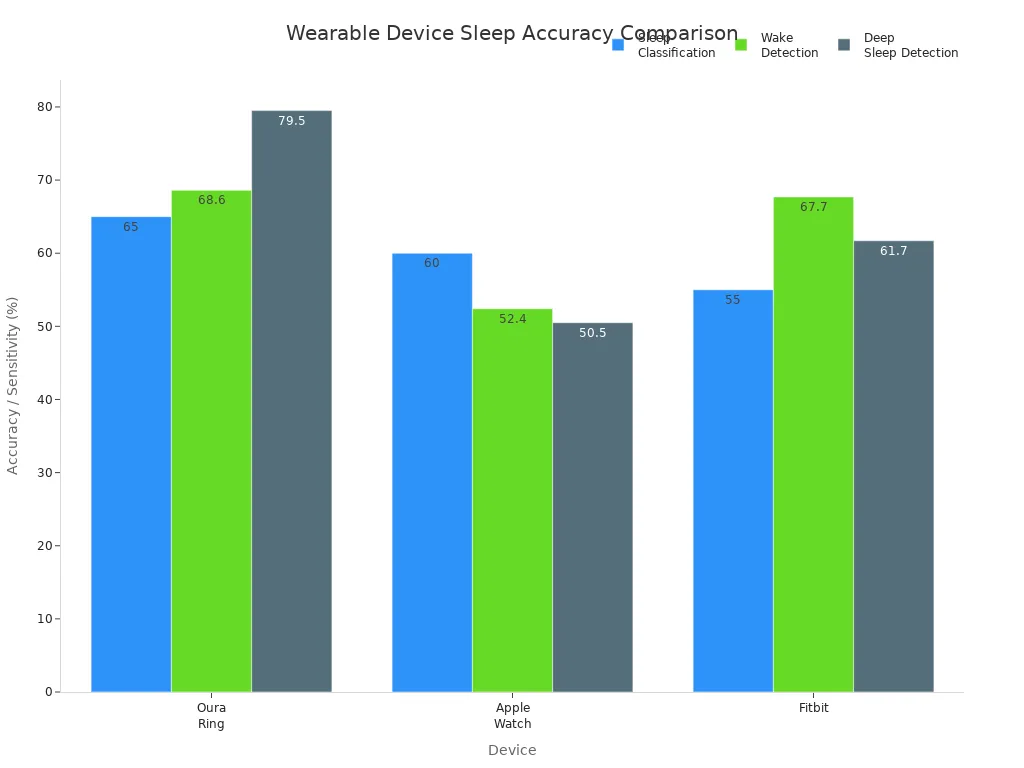
Your scores may change a little each day. How you wear the ring or what you do can change the results. The Oura Ring works best if you wear it often and keep your app updated.
Data Privacy
You trust your ring with your health data. The Oura Ring keeps your information safe with strong privacy rules:
-
Your data is locked when sent.
-
Oura does not sell or rent your information.
-
Data mostly stays in your area, with safety for any moves.
-
Oura will tell you if the law asks for your data and fights unfair requests.
You control your own data. The company only shares your info with trusted partners and strict rules. You can feel sure your stress and health data are private and safe.
Compare: Aura Ring by VERTU
Design and Comfort
When you look at smart rings, design and comfort matter a lot. The Oura Ring and the Aura Ring by VERTU both focus on making you feel good while wearing them all day. The Oura Ring uses a smooth, minimalist design. It feels light and fits naturally on your finger. The Aura Ring by VERTU stands out with its crystal design and deep-gold tones. You see the light reflect off its surface, giving it a unique look.
Both rings use high-quality materials. The Oura Ring uses titanium, which is biocompatible and lightweight. This means you can wear it for long periods without discomfort or skin irritation. The Aura Ring by VERTU uses a proprietary crystal composite. This material feels featherlight and smooth, so you may forget you are even wearing it. The ring’s ergonomic curves help it move with your hand.
Here is a table that shows how the materials impact comfort:
|
Material |
Properties |
Impact on Comfort |
|---|---|---|
|
Titanium |
Biocompatible, lightweight |
Ideal for long-term wear, non-allergenic, and feels natural on the skin. |
|
Crystal Composite |
Featherlight, smooth, reflective |
Comfortable for all-day use, visually striking, and gentle on the skin. |
You can choose the style that fits your taste and lifestyle. If you want a classic look, the Oura Ring may suit you. If you prefer a ring that looks like jewelry, the Aura Ring by VERTU offers a more artistic touch.
Health Features
Both rings give you powerful health tracking, but each takes a different approach. The Oura Ring focuses on tracking your sleep, activity, and stress. You get detailed data on your heart rate, heart rate variability, temperature, and movement. The ring helps you understand your stress patterns and gives you tips to manage your health.
The Aura Ring by VERTU also tracks your sleep and heart rate. It adds features like blood oxygen, blood pressure, and glucose monitoring. The ring gives you proactive health guidance and personalized wellness reports. You see your health data as a journey, not just numbers.
You get to decide which features matter most to you. The Oura Ring gives you deep insights into stress and recovery. The Aura Ring by VERTU offers a blend of advanced health tracking and luxury design. Both rings help you take control of your well-being in a way that fits your life.
You get instant feedback about your stress with the Oura Ring. This helps you notice what causes stress and learn how to handle it. Many people say they understand their stress better now. This helps them deal with stress and control their feelings.
-
Make sure your ring fits so it works right.
-
Sometimes your body shows stress even if you do not feel it.
“We want members to know how their body reacts to stress and recovery. We hope they can see what causes stress and what helps them recover. Our goal is to help people find balance between stress and recovery.”
If you want to learn more, try wearable health technology. It can help you make your daily routine fit you and support your health.
FAQ
How often should you wear the Oura Ring for accurate stress tracking?
You should wear the Oura Ring day and night. This helps the ring collect enough data to show your stress patterns. The more you wear it, the better your results.
Can the Oura Ring tell you exactly when you feel stressed?
The Oura Ring shows changes in your body that may mean stress. It cannot read your mind. You see stress zones and patterns, but you still need to notice how you feel.
Does the Oura Ring replace a doctor for stress or health advice?
No, the Oura Ring does not replace a doctor. You can use it to learn about your body. Always talk to a healthcare professional for medical advice.
What should you do if your Oura Ring shows high stress?
Try deep breathing, take a short walk, or rest. The app gives you tips based on your data. You can use these ideas to help lower your stress.
Is your data safe with the Oura Ring?
Oura protects your data with strong privacy rules. You control your information. The company does not sell your data. You can read more about privacy in the app settings.

